Goldie Leigh Hospital
Lodge Hill, Abbey Wood, Woolwich, SE2 0AY
Medical dates:
Medical character:
Specialist. Later, mental
The Goldie Leigh Children's
Cottage Homes for local orphans were opened in 1902 by the Woolwich
Union. The name may have been derived from two local families -
the Leighs and the Goldies (the Goldie residence later became included
in the Hospital grounds). The Homes were in two-storey houses
along Lodge Lane. The 7.32 hectare site also contained a laundry
and an infirmary.
In 1914 the Metropolitan Asylums Board took over the site to use as a hospital for children with ringworm who had previously been treated at Downs Hospital, Banstead. Later, children with other skin diseases were also admitted.
In 1930 the LCC took over the administration of the Homes, when there were 218 beds. The name was changed to Goldie Leigh Hospital in 1933. By 1938 it had 248 beds. For its long-stay patients the Hospital had its own school and ran its own Cub, Boy Scout, Brownie and Girl Guide groups.
During WW2 the corridors were made into air-raid shelters. An Auxiliary Fire Service station was located on the premises and the male staff of the Hospital formed its own Home Guard company. The patients were evacuated only when the area was bombarded by V2 rockets towards the end of the War.
As treatments for skin disorders improved, the demand for in-patient hospital treatment declined. In 1961 the Bostall Unit began to admit children with learning difficulties.
The Hospital continued to provide accommodation for mentally disabled children until 1988.
In 1914 the Metropolitan Asylums Board took over the site to use as a hospital for children with ringworm who had previously been treated at Downs Hospital, Banstead. Later, children with other skin diseases were also admitted.
In 1930 the LCC took over the administration of the Homes, when there were 218 beds. The name was changed to Goldie Leigh Hospital in 1933. By 1938 it had 248 beds. For its long-stay patients the Hospital had its own school and ran its own Cub, Boy Scout, Brownie and Girl Guide groups.
During WW2 the corridors were made into air-raid shelters. An Auxiliary Fire Service station was located on the premises and the male staff of the Hospital formed its own Home Guard company. The patients were evacuated only when the area was bombarded by V2 rockets towards the end of the War.
As treatments for skin disorders improved, the demand for in-patient hospital treatment declined. In 1961 the Bostall Unit began to admit children with learning difficulties.
The Hospital continued to provide accommodation for mentally disabled children until 1988.
Present status (March 2008)
The site is currently undergoing regeneration by the Oxleas NHS Foundation Trust, due to be completed by autumn 2008. A 10-bed adult learning disability residence has been constructed. The Hospital provides services, including physiotherapy, occupational therapy and psychiatric help, for people with learning difficulties and mental health problems.
The site is currently undergoing regeneration by the Oxleas NHS Foundation Trust, due to be completed by autumn 2008. A 10-bed adult learning disability residence has been constructed. The Hospital provides services, including physiotherapy, occupational therapy and psychiatric help, for people with learning difficulties and mental health problems.
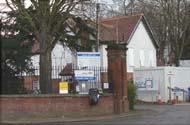
The main entrance
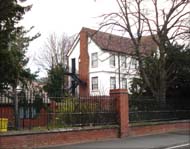
Bostall House at the corner

The back of Bostall House with another old building
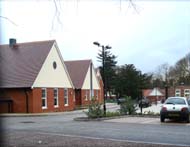
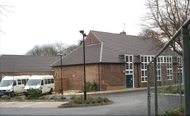
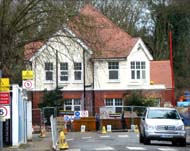
Through the main gate
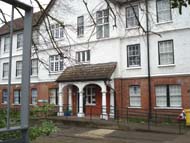
Entrance to Bostall House
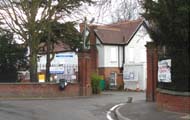
Residential buildings to the south of the site
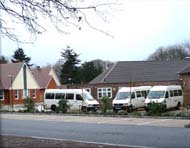
New facilities on the Longleigh Lane side of the site
Ringworm (tinea capitis)
a fungal infection of the scalp was endemic in London schools
during the 1920s. Before antifungals were
available, the treatment of choice was depilatory radiotherapy.
Unknowingly at that time, patients then became at high risk of
developing iatrogenic cancers of the scalp. Basal cell carcinoma
was the most frequent tumour.
Cochrane Shanks S 1967 Vale epilatio. X-ray epilation of the scalp at Goldie Leigh Hospital, Woolwich (1922-58). British Journal of Dermatology 79, 237-238.
Lydon FL, Stephanides T, Robb TM 1949 Ringworm of the scalp. British Medical Journal 1 (4603), 523-524.
www.members.aol.com/jdjandsje5/goldie_leigh/index.htm
(Accessed June 2008)
www.workhouses.org.uk
Return to home page